Stewart Brand's Blog, page 15
March 4, 2020
Photographer Captures the Surprising Beauty of Doomsday Seed Vaults
 Kangaroo grass, themeda triandra, Photo courtesy Dornith Doherty
Kangaroo grass, themeda triandra, Photo courtesy Dornith Doherty Artist and professor, Dornith Doherty, has traveled to Svalbard, Norway and to Sussex, England, among others, to document the ethereal nature of the seeds stored in these sub zero temperature vaults. The Millennium Seed Bank in Sussex now contains more than 2.3 billion seeds, spanning more than 40,000 different species. As reported by Jessica Leigh Hester for Atlas Obscura, these “arks of the apocalypse”, are an excellent example of human foresight, as such stored seed archives are essential insurance against pests, disease and other forms of botanical destruction that could result in future famine. ‘Each seed bank is a botanical backup plan: The hope is that humans can draw on these reserves to save plant populations on the brink.’
Doherty discusses the experience of working in such extreme environments such as the Seed Vaults:
“Stepping into a seed vault still takes my breath away. They are always bitterly cold and filled with the sound of forced air roaring through the shelves. They are so cold that to enter them, you have to wear arctic parkas and gloves. It is awe-inspiring to be surrounded by fertile and diverse seeds resting in a state of suspended animation, preserved for a distant and unknowable future.”

February 26, 2020
Our Long Bets and Predictions about 02020

The year 02020, like 02000 before it and 02050 after it, has long captivated the popular imagination as a kind of shorthand for “the future.” Some predictions about life in 02020 are remarkably prescient: In 02004, the National Intelligence Council predicted that an “America first” movement would rise in the United States; In Ray Bradbury’s 01953 dystopian novel Fahrenheit 451, he predicts that people would listen to “little seashells” filling their ears with “an electronic ocean of sound, of music and talk”; In 01997, the Independent predicted that Boris Johnson, who was a 32-year-old columnist at the Daily Telegraph at the time, would lead Britain’s exit from the European Union.
Other predictions about 02020 have not aged so well: In 01964, the RAND Corporation predicted that by 02020, humans would breed apes and cetaceans for the express purpose of performing daily chores. In 02004, futurist Ray Kurzweil predicted that food consumption would be on the wane, as “billions of tiny nanobots in the digestive tract and bloodstream could intelligently extract the precise nutrients we require.”
Much of our work at The Long Now Foundation focuses on broadening our time horizons beyond these arbitrary dates, which can act as mental barriers to thinking long-term. Our Long Bets project is an exception. Long Bets was founded in 02002 as a way of fostering more accountable predictions about the future. The forum asks all predictors to put their name, a solid argument, and a financial pledge down in support of their statement about the future (the winnings go to charity). Long Now, in turn, provides a long-term record where any prediction can be revisited, reviewed, and discussed at any time.
A Long Bet always starts with a prediction. All predictions should come with an argument in support, a financial pledge, and an end-date. The minimum term for a prediction is two years; there is no maximum term. A prediction becomes a bet when a challenger comes forward with a counterargument. The predictor may then choose to make a bet with the challenger. The predictor and challenger will agree on a wager, and each will choose a charitable cause to receive the winnings. When the end-date for the bet passes, The Long Now Foundation adjudicates the bet and donates the proceeds to the winner’s charity of choice.
We had a number of Long Bets and predictions about 02020. Below, we take a look at what some people bet — and others, predicted — would happen this year.
The Horgan-Kaku Wager
 The CERN Particle Accelerator.
The CERN Particle Accelerator. LONG BET #12: By 02020, no one will have won a Nobel Prize for work on superstring theory, membrane theory, or some other unified theory describing all the forces of nature.
Predictor: John Horgan, a science writer.
Challenger: Michio Kaku, theoretical physicist.
Bet Duration: 18 years (02002–02020)
Stakes: $2,000
Last October, the Royal Swedish Academy of Sciences announced that it was awarding the 02019 Nobel Prize in Physics to James Peebles, Michel Mayor, and Didier Queloz “for contributions to our understanding of the evolution of the universe and Earth’s place in the cosmos.”
But there was another winner the Academy did not recognize: science writer John Horgan. 18 years have come and gone without a Nobel Prize for superstring theory or any other unified theory of physics, meaning he is the winner of this Long Bet.
Many theoretical physicists, like Horgan’s challenger, Michio Kaku, believe string theory offers a path towards the long-sought after “Theory of Everything.” Such a theory might answer the most fundamental questions humans have pondered about the universe. Horgan, knowing that the Academy is a stickler for empirical evidence when it comes to awarding its Nobel for Physics, bet that such evidence would not be found by 02020. He was right.
“Physicists have yet to produce any empirical evidence for either string theory, which was invented more than 40 years ago, loop-space theory or any other unified theory,” Horgan wrote in a blog post about his winning bet for Scientific American. Kaku is still optimistic about the chances of discovering evidence for a Theory of Everything through the Large Hadron Collider particle accelerator. But so far, that hasn’t happened. (Fortunately, the Large Hadron Collider also didn’t destroy Earth, which was the subject of another Long Bet that recently came to term).
Other Long Bets about 02020 Coming to Term in the Year After 02020
While the Horgan-Kaku wager was the only Long Bet that came to term this year, we do have two bets on record about 02020 that will end within the next year. Circumstances can certainly change before these bets’ end dates (December 31st, 02020, and June 1st, 02021, respectively), but we are at a point where we can take stock of where things stand. These bets will be officially adjudicated at a later date.
 Soccer star Carli Lloyd kicked a 55-yard field goal at a practice between two NFL teams. That’s on the high end of what most professional football kickers can accomplish.
Soccer star Carli Lloyd kicked a 55-yard field goal at a practice between two NFL teams. That’s on the high end of what most professional football kickers can accomplish.LONG BET #367: By the end of the year 02020, a professional sports team that is part of either the National Football League, the National Basketball Association, Major League Baseball, the National Hockey League, or Major League Soccer will integrate and have a woman as a team member/player.
Predictor: Thomas R. Leavens, a Chicago-based attorney.
Challenger: Nils Gilman, VP of Programs at the Berggruen Institute (Gilman spoke at Long Now in 02010)
Bet Duration: 13 years (02008–02020)
Stakes: $500
While there’s still time for this to happen, it’s not looking likely by the end of the year. Nevertheless, there are signs that the major sports are getting close. Goaltender Manon Rhéaume played in preseason games for the National Hockey League in the 01992 and 01993 seasons, but was not included as part of the regular season roster (a stipulation of the bet’s terms).
Women have been kickers in college football for years, but have not broken through at the professional level…yet. In 2013, Lauren Silberman became the first woman to try out for an NFL team (it didn’t go so well). In 02019, World Cup hero Carli Lloyd received offers to play in preseason games from several NFL teams after footage of her kicking field goals went viral. The Guardian suggested that the rise of women’s rugby in Australia might be the most promising conduit for women to break into the NFL.
Days before his untimely passing in a helicopter crash, former NBA basketball player Kobe Bryant told CNN that he believed there were a number of women in the WNBA who “could play in the NBA right now.” The NBA is leading the major sports in terms of integrating women on coaching staffs and as referees. Perhaps the court will be next.
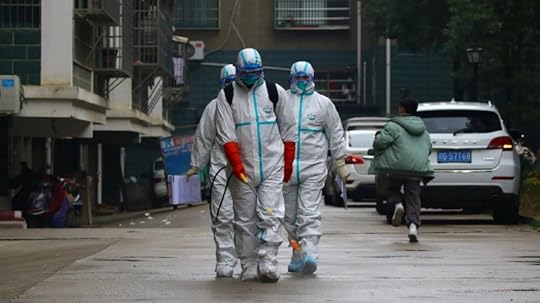 Workers disinfecting a residential neighborhood in China following the coronavirus outbreak. © Reuters
Workers disinfecting a residential neighborhood in China following the coronavirus outbreak. © ReutersLONG BET #9: A bioterror or bioerror will lead to one million casualties in a single event within a six month period starting no later than Dec 31 02020.
Bet Duration: 4 years (02017–02020)
Predictor: Martin Rees, Astronomer Royal (Rees spoke at Long Now in 02010 and 02019)
Challenger: Steven Pinker, cognitive psychologist at Harvard (Pinker spoke at Long Now in 02012 and 02018)
Stakes: $400
So far, this hasn’t happened. In a 02017 Long Now talk, Renee Wegrzyn of DARPA outlined how CRISPR-Cas 9 technology could be used for a bioterror attack, and what the U.S. Government was doing to prepare for that possibility through innovations in biosafety and biosecurity.
More recently, in the aftermath of the coronavirus outbreak, misinformation proliferated, including conspiracy theories that the disease was actually a bioterror attack on China. This is not true. Nevertheless, the spread of the coronavirus does underscore global unpreparedness to deal with such outbreaks, including ones due to a bioterror attack — something Bill Gates warned about in 02018: “We can’t predict when, but given the continual emergence of new pathogens, the increasing risk of a bioterror attack, and the ever-increasing connectedness of our world, there is a significant probability that a large and lethal modern-day pandemic will occur in our lifetime,” Gates said.
Long Predictions
A number of people made predictions about 02020 that were never challenged (i.e., they remained predictions, not official Long Bets). A selection of some of those predictions, and our assessments, follow.
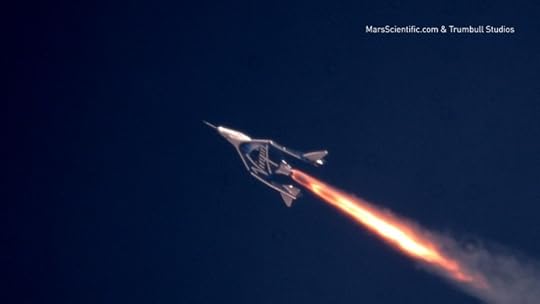 Virgin Galactic
Virgin Galactic By the year 02020, the tickets to space travel — at the least to Moon, will be available over the counter.
Predictor: Hemant Sharma
Prediction Duration: 18 years (02002–02020)
Did the Prediction Come True? Yes and no (not over the counter, currently sold out).
Virgin Galactic offered seat reservations into space for $250,000, all of which are currently sold out. Space X also aims to offer space tourism experiences later in 02020, with tickets planned to be priced at $35,000 per day. SpaceX has been developing Crew Dragon under a $2.6 billion commercial-crew contract with NASA.
 The EmDrive. Via Getty.
The EmDrive. Via Getty.A completely propellantless (no material particles expelled for propulsion) or “field propulsion-type” aerospace vehicle will land on the Moon.
Predictor: Jay C. Dillon
Prediction Duration: 18 years (02002–02020)
Did the Prediction Come True? No, but there are attempts to develop this technology.
In 02018, NASA developed the EmDrive, an engine that generates thrust without the need for propellants (rather than fuel) by utilizing electromagnetic fields. Thrust is created by “bouncing microwaves around inside a closed, cone-shaped cavity.” But the assertion that the EmDrive technology works has been questioned and refuted by researchers in Germany. EmDrive goes against Newton’s Third Law of Motion — or every action there is an equal and opposite reaction. Propellantless aerospace vehicles seem impossible due to this reason.

75% of all incremental new generation will come from renewable/sustainable energy in the U.S.
Predictor: Jigar Shah
Prediction Duration: 16 years (02004–02020)
Did the Prediction Come True? Yes — 76%, in fact.
In January, the U.S. Energy Information Administration (EIA) said it expected 76% of new electric generating capacity to come from wind and solar in 02020.
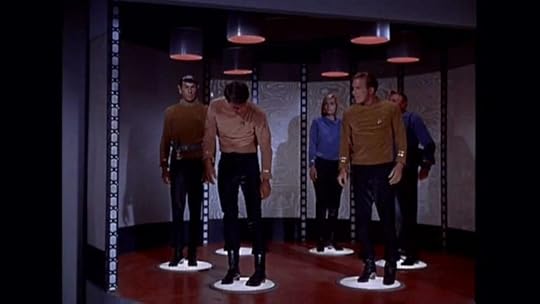 Alas, teleportation is still science fiction.
Alas, teleportation is still science fiction.The technology will exist that will allow for the “faxing” (teleportation- sending/receiving) of actual inanimate objects, such as text books, clothing, jewelry and the like.
Predictor: Rob Schnitzer
Prediction Duration: 16 years (02004–02020)
Did the Prediction Come True? No.
Teleportation of inanimate household items is currently still impossible. However, quantum teleportation was achieved through a process called quantum entanglement by a team of researchers in China. In 02017 they sent a photon from the ground to an orbiting satellite more than 300 miles above.
 China’s HL2M Project. Via Xinhua.
China’s HL2M Project. Via Xinhua.By December 31, 02020, synthetic solar energy (fusion) will have been shown to be a technically feasible, by an experiment demonstrating a controlled fusion reaction producing more harnessable energy than was used to ignite it.
Predictor: Danny Hillis, Co-Founder of Long Now, Inventor of the 10,000 Year Clock. (Hillis has spoken at Long Now in 02004 and 02014).
Prediction Duration: 10 years (02011–02020)
Did the Prediction Come True? Not yet, but there’s still time.
This has yet to occur, but it just might by year’s end. In China an ‘artificial sun’ project is set to be finished by the end of year, which is designed to replicate nuclear fusion.
 Icebergs in the Arctic. Via Unsplash.
Icebergs in the Arctic. Via Unsplash.The first ice-free Arctic day (as defined by NSIDC) will occur by the end of 2020.
Predictor: Ramez Naam (Naam spoke at Long Now in 02015).
Prediction Duration: 8 years (02013–02020)
Did the Prediction Come True? We haven’t reached the end of 02020 yet, but this prediction will almost certainly not come true.
The first ice-free Arctic day is estimated to happen around 02030–02050. See here for more on how the NSIDC defines an ice-free Arctic day.
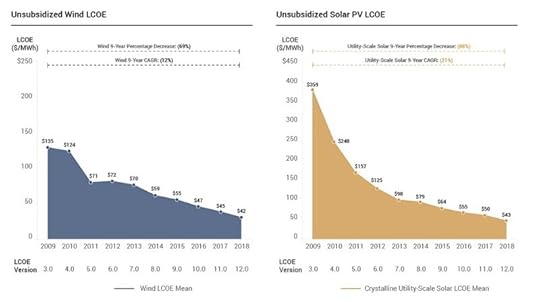 The average cost of electricity from wind and solar plants has continued to drop.
The average cost of electricity from wind and solar plants has continued to drop. Across at least 25% of the continental US, the cost of new solar or wind will be lower than the cost of either new coal or new natural gas.
Predictor: Ramez Naam
Prediction Duration: 7 years (02013–02020)
Did the Prediction Come True? Yes.
Renewable energy, including solar and wind, is reported to be cheaper than coal and natural gas.
 Anti-government protests in Iran in 02019. Via Getty.
Anti-government protests in Iran in 02019. Via Getty.Iranian women will become the dominant force in Iranian politics and kick out the concept of a Supreme Leader.
Predictor: Michael Sales
Prediction Duration: 7 years (02013–02020)
Did the Prediction Come True? No.
Ali Khamenei is still Supreme Leader of Iran. Women have made gains in parliament but are by no means a dominant force.
 Turkey’s president Recep Tayyip Erdogan. Via AP.
Turkey’s president Recep Tayyip Erdogan. Via AP.Turkish president Recep Tayyip Erdogan will be found guilty at a court of law or will flee from the country.
Predictor: Ibrahim Okuyucu
Prediction Duration: 5 years (02015–02020)
Did the Prediction Come True? No.
Erdogan is still in power, although a failed coup against him in 02016 and recent defeats in elections are signs his position is weakening.
Additional research and analysis provided by Alice Riddell .
Learn More
Do you have strong opinions about the future? Put your money where your mouth is. Make a bet with Long Bets here.Ahmed Kabil, “How Warren Buffett Won His Multi-Million Dollar Long Bet” in Long Now.Grace Hauck, “20 Predictions About 2020: Here’s What People Said Would Happen This Year” in USA Today.Rob Picheta, “Nanobots, ape chauffeurs and flights to Pluto. The predictions for 2020 we got horribly wrong” in CNN Business.

The Permanent Legacy Foundation Wants to Preserve Your Digital Legacy for Future Generations
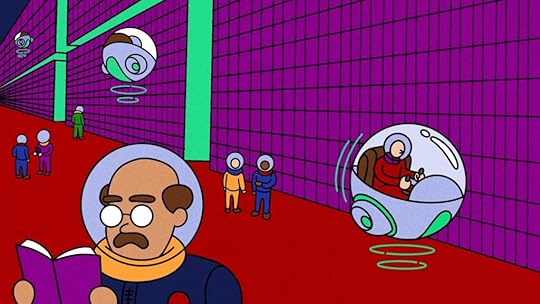
“Digital storage is easy; digital preservation is hard.”
-Stewart Brand, The Clock of the Long Now (01999)
In March of 02019, MySpace, the one-time de facto social media network before the rise of Facebook, announced that it had lost 12 years’ worth of users’ songs, photos, and videos during a data migration. In emails to angry users who demanded to know what happened to their data, the company admitted there was no way to recover it. A sizable chunk of internet history was lost forever.
MySpace’s data loss is a harbinger of what we at Long Now call a digital dark age. All of our digital platforms and systems, from the social media networks we post on every day, to the storage services we rely on to back up our most important files, to the infrastructures that power our digital world economy, are vulnerable to irretrievable data loss. Over time, file formats, applications, and operating systems go obsolete. Legacy systems become impenetrable. The migration of data to new systems risks breaking the chain of information transmission.
“In personal terms the loss seems merely an inconvenience, the price of progress,” Long Now Co-Founder Stewart Brand wrote in Clock of the Long Now (01999). “But in terms of civilization the loss is catastrophic. Just when we think at last, thanks to digitization, everything we want to keep can be preserved forever, the reality is precisely the opposite.”
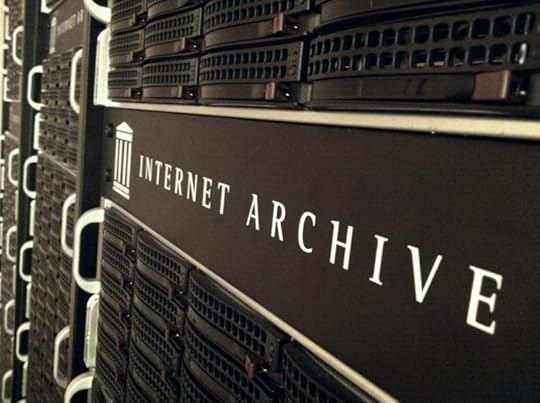 The Internet Archive is building a digital library of Internet sites and other cultural artifacts in digital form.
The Internet Archive is building a digital library of Internet sites and other cultural artifacts in digital form.There has been progress toward preventing a digital dark age in the two decades since Brand wrote those words. The Internet is being archived. Electronic file formats and digital storage are being standardized. Open source software is being adopted by institutions across the world. But on the individual level, the risk of losing one’s digital legacy remains.
A new cultural heritage nonprofit organization is hoping to eliminate that risk. The Permanent Legacy Foundation was founded to ensure that the digital legacy of all people is preserved in perpetuity for the historical and educational benefit of future generations.
“In the rush to digitize all of human knowledge and experience, we’ve put an emphasis on availability now, but have neglected to design for long term preservation,” Robert Friedman, the Executive Director of Permanent, says. “The same digital technology that has made it possible to connect everyone on Earth also makes it possible for everyone to be remembered as a contributor to a shared history. Preservation for every person is now within reach but it requires a fundamentally new kind of organization.”
Permanent aims to become that organization by applying the curatorial, preservation, and funding models of museums, libraries, and archives to commercial cloud storage technology. Similar to other cloud storage services, Permanent allows users to store and access the content they need right now. It distinguishes itself by its focus on preserving that content over the Long Now.
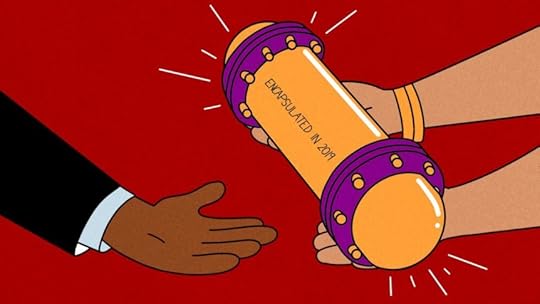
Permanent’s security and access strategy for multi-generational data has three components to it: a public legacy, a private legacy, and a right to be forgotten. This flexibility enables users to curate their digital legacy according to their long-term wishes. Say you’re a writer. You might want to make certain parts of your content public while you’re alive and after you’re gone: your published and unpublished work, noteworthy correspondence, rejection letters, photos of you accepting awards, et cetera. In so doing, you allow future descendants to better understand you, and future historians to better understand our time.
But you might not want to make all of your content public: legal documents, private family photos, videos, personal correspondence, et cetera. Those you entrust as stewards over your digital legacy can access those sensitive files, and later choose to release them.
Then there’s the content you might want to store, but never share with anyone. Permanent’s right to be forgotten allows for materials to be stored in a double-encrypted “vault.” Only those who have the encryption key can unlock the materials. Similar to how cryptocurrency encryption works, once the key is lost, the material cannot be accessed.
A user will be able to set the rules for each file they store via Permanent’s Directives. Say you’ve written a poem about the year 09999 that you’d like to be publicly released on December 31st of that year, or a novella about Mars that you want published on the occasion of the first human being born on the Red Planet. “Directives can trigger a change of permissions, ownership, public status, or bury materials based on specific events or dates,” Friedman says.
“As part of the Permanent mission to ensure the preservation of the digital legacy of all people, we encourage our users to make as much of their personal memories public as possible,” Friedman says. “Materials that do not have specific directives set will be made public by default after the death of their owners and the expiration of their copyright.”
There’s a high likelihood that that poem written about the year 09999 was saved in a file format that will no longer exist by 09999. To maintain accessibility to your materials, Permanent promises to convert the formats as technology evolves. Additional measures to ensure accessibility include storing the materials with commercial storage partners, creating redundant backups, and migrating the data.
Permanent maintains its archival integrity through reading metadata and allowing users to edit it; providing historical context through features like user profiles, members, and relationships; restoring file integrity via backups whenever a file becomes corrupted; and employing a LOCKSS (Lots of Copies Keep Stuff Safe) approach to archiving your digital legacy.
To ensure its viability as a long-lived institution, Permanent uses a Non-Profit Endowment model, much like how museums and universities operate. “Instead of a recurring monthly fee, users pay a one-time storage fee and the money is put into an investment account (an endowment) whose purpose is sustainability,” Friedman says. “The returns or interest on the endowment cover the continued cost of storage. Our model converts that one-time ‘micro-endowment’ donation into perpetual storage.”
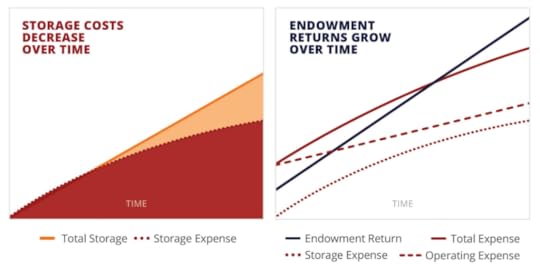 From Permanent.org: “Even as the volume of digital materials preserved on Permanent.org grows over time (total storage), storage expenses decrease as the cost of storage declines. Endowment returns grow in sync with the volume of digital materials stored on Permanent.org and eventually exceed the total expenses: storage plus operations.”
From Permanent.org: “Even as the volume of digital materials preserved on Permanent.org grows over time (total storage), storage expenses decrease as the cost of storage declines. Endowment returns grow in sync with the volume of digital materials stored on Permanent.org and eventually exceed the total expenses: storage plus operations.”“The goal is for the endowment to provide, at the very minimum, permanent storage of users’ materials and the capability to download these materials at any time,” Friedman says. “But it’s not just the cost of storage — these fees also support an organization committed to protecting, migrating, and maintaining access to user content for all time.”
For that goal to be met, Permanent’s endowment needs to reach a critical mass. The organization is currently raising funds, with a goal of $100,000. As of this writing, it’s more than two-thirds of the way there.
“If we make it possible to preserve the legacy of every individual and make that legacy accessible to future generations,” Friedman says, “then we can create a resource to transform the idea of human history as we know it.”
Permanent is offering followers of The Long Now Foundation 10 gigabytes of free archival storage when you sign up through this page.
Learn More
Robert Friedman, “Democratizing Permanence to Create an Inclusive History” in Permanent.Alexis Madrigal, “Future Historians Probably Won’t Understand Our Internet, and That’s Okay” in The Atlantic.Clifford Lynch, “Stewardship in the ‘Age of Algorithms’” in First Monday.Ahmed Kabil, “Long Now Partners with GitHub on its Long-term Archive Program for Open Source Code” in Long Now.Long Now’s summary of the “Time & Bits: Managing Digital Continuity” conference at the Getty Center in 01998.Browse our blog posts on the Digital Dark Age.Examples of how individuals and organizations are using Permanent’s archives.

February 21, 2020
3-D Digital Model Brings Ancient Athens Back to Life
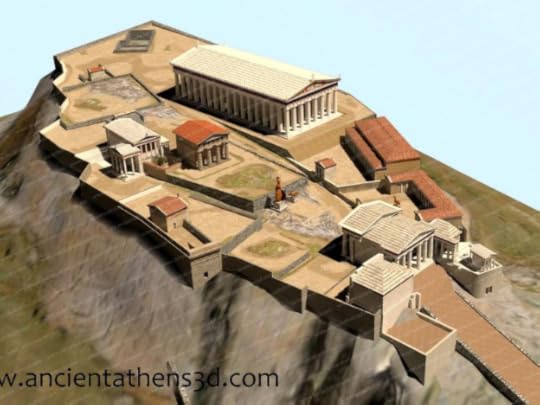 3-D model of the Acropolis, image: Ancient Athens 3D / Dimitris Tsalkanis
3-D model of the Acropolis, image: Ancient Athens 3D / Dimitris Tsalkanis As recently reported by the Smithsonian Magazine, a new 3-D model, created by photographer-animator Dimitris Tsalkanis, transports us digitally back into 3,000 years of ancient Athenian history. The free site, Ancient Athens 3-D, offers an online immersive experience through seven different time periods, from 01200 B.C., through to the 19th century A.D. The viewer can scroll through the cities monuments and landmarks throughout the ages, from the long lost classical Acropolis to the Parthenon, which is still standing to this day.
“In crafting the site, which first launched in 2008, Tsalkanis let waves of architecture guide the delineations of his seven featured eras… Selecting one of the periods from the site’s menu takes the user to a page with a brief history lesson and links to individual monuments, rendered with each era’s architectural additions.
The website takes a bit of an open-source approach, adding tweaks or updates every time new data on Athens’ ancient archaeology surfaces, all in service of maintaining as much accuracy as possible.”
Katherine J. Wu, Smithsonian Magazine

February 18, 2020
Podcast: How to Be Futuristic | Bruce Sterling
The future is a kind of history that hasn’t happened yet. The past is a kind of future that has already happened. The present moment vanishes before it can be described. Language, a human invention, lacks the power to fully adhere to reality.
We live in a very short now and here, since the flow of events in spacetime is mostly closed to human comprehension. But we have to say something about the future, since we have to live there. So what can we say? Being “futuristic” is a problem in metaphysics; it’s about getting language to adhere to an unknowable reality. But the futuristic quickly becomes old-fashioned, so how can the news stay news?
Bruce Sterling is a futurist, journalist, science-fiction author, and culture critic. He is the author of more than 20 books including ground-breaking science ficiton and non-fiction about hackers, design and the future. He was the editor in 01986 of Mirrorshades: The Cyberpunk Anthology (1986) which brought the cyberpunk science fiction sub-genre to a much wider audience. He previous spoke for Long Now about “The Singularity: Your Future as a Black Hole” in 02004. His Beyond the Beyond blog on Wired.com is now in its 15th year. His most recent book is Pirate Utopia.
Listen on Spotify.
Listen on Apple Podcasts.

February 14, 2020
Neural Networking Upscales 01895 Short Film
An early example of moving images, Lumière Brothers’ 01895 short “Arrival of a Train at La Ciotat”, has been revitalized and upscaled by Youtuber Denis Shiryaev. Shiryaev reworked the clip through the use of several neural networks to upscale the clip to 4K resolution and 60 FPS. The result is an impressive sharpness and clarity of image, bringing the clip to life anew.

February 13, 2020
Podcast: San Francisco Time: The Photography of Fred Lyon
Fred Lyon is a time traveler with a camera and tales to tell. At 95-years-old, this former LIFE magazine photographer and fourth generation San Franciscan has an eye for the city and stories to match. We showed photos from Fred’s books San Francisco, Portrait of a City: 1940-1960 and San Francisco Noir, and images spanning his diverse career. In conversation, he discussed his art, work, and life; recollections of old friends like Herb Caen and Trader Vic Bergeron; and more. He shared his unique perspective after nearly a century in San Francisco.
Fred Lyon’s career began in the early 01940’s and has spanned news, architecture, advertising, wine and food photography. In the golden years of magazine publishing his picture credits were everywhere from LIFE to VOGUE and beyond. These days find him combing his picture files for galleries, publishers and print collectors. He has been called San Francisco’s Brassaï. He’s also been compared to Cartier Bresson, Atget and Andre Kertez, but all with a San Francisco twist. That’s fine with this lifelong native who happily admits his debt to those icons.
Listen on Spotify.
Listen on Apple Podcasts.

February 12, 2020
Eunoia: The Internet’s Dictionary of Untranslatable Words
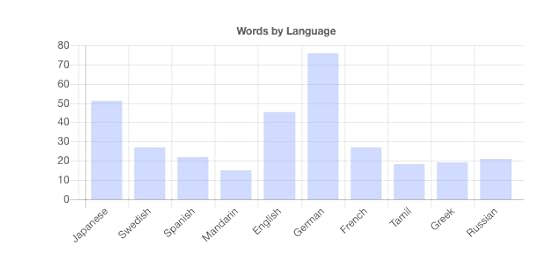
Chart of languages and their untranslatable words on Eunoia.
Created in just 24 hours by Steph Smith, Eunoia offers hundreds of untranslatable words in a useful and accessible online dictionary. Eunoia is itself an untranslatable word meaning a “well-mind” or “beautiful thinking.” The user can search Eunoia’s database by “language, tag, or the word itself. There are over 500 words in the database, across 50+ languages and 50+ tags.”
The language with the highest untranslatable words was German; from the well-known Schadenfreude, which means to be happy at someone else’s misfortune, to the complicated Jein, meaning both yes and no. Russian also provided a rich trove of untranslatable words: Nutro– something that governs your inner being; Stushevatsya – ‘to fade into the background.’ Eunoia is an ongoing crowdsourced project and is open to new word suggestions.

February 10, 2020
Genetically Engineered Moths a Success in Cornell Crop Protection Study

A recent article in phys.org reports on a newly-published study on the use of genetically engineered moths to increase crop protection. The Cornell study documents the successful application and release of self-limiting, genetically engineered diamondback moths to fields of brassica crops.
“The diamondback moth, also known as Plutella xylostella, is highly damaging to brassica crops such as cabbage, broccoli, cauliflower and canola. This new strain of diamondback moth, developed by Oxitec Ltd, is modified to control pest diamondback moth in a targeted manner. The study showed the engineered strain had similar field behaviors to unmodified diamondback moths, with results offering promise for future protection of farmers’ brassica crops.
Oxitec’s self-limiting diamondback moth is modified to control its pest counterparts in the field. After release of males of this strain, they find and mate with pest females, but the self-limiting gene passed to offspring prevents female caterpillars from surviving. With sustained releases, the pest population is suppressed in a targeted, ecologically sustainable way. After releases stop, the self-limiting insects decline and disappear from the environment within a few generations.”
Frontiers, “First release of genetically engineered moth could herald new era of crop protection.”

February 7, 2020
Podcast: The Art and Science of Deep Time: Conceiving the Inconceivable in the 19th Century | Caroline Winterer
The ambition to think on the scale of thousands, millions, even billion of years emerged in the 19th century. Historian and author Caroline Winterer chronicles how the concept of “deep time” has inspired and puzzled thinkers in cognitive science, art, geology (and elsewhere) to become one of the most influential ideas of the modern era.
Caroline Winterer is Anthony P. Meier Family Professor in the Humanities and Director of the Stanford Humanities Center. She is an American historian, with special expertise in American thought and culture. Her most recent book is American Enlightenments: Pursuing Happiness in the Age of Reason. Other books include The Mirror of Antiquity: American Women and the Classical Tradition, 1750-1900, and The Culture of Classicism: Ancient Greece and Rome in American Intellectual Life, 1780-1910. She has received fellowships from among others the Mellon Foundation, the National Endowment for the Humanities, and the National Humanities Center. Her writing appears in numerous publications and academic journals. For mapping the social network of Benjamin Franklin she received an American Ingenuity Award from the Smithsonian Institution.
Listen on Spotify.
Listen on Apple Podcasts.

Stewart Brand's Blog
- Stewart Brand's profile
- 291 followers



